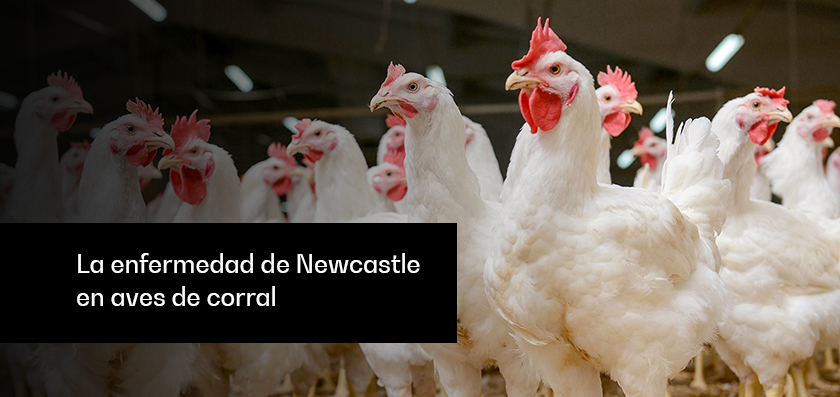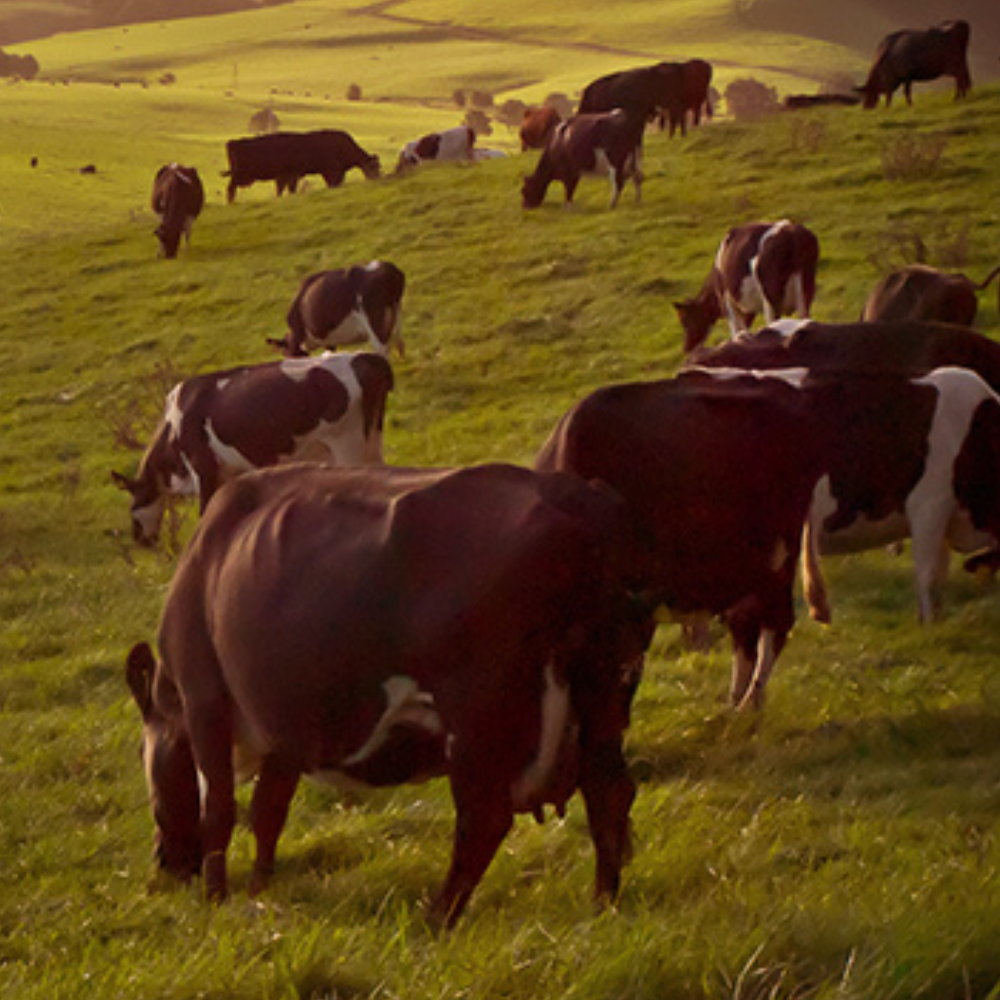Newcastle disease is an acute and highly contagious disease that affects birds, including poultry. Due to its enormous morbidity and mortality, it has a large economic impact on poultry production (1). For example, during the last major outbreak in the United States in 2002-2003, the death of about 4 million birds caused a loss of approximately 162 million dollars (2). For these reasons, it is important to know how it affects birds and how we can control this disease.
Etiology
Newcastle disease is caused by an avian paramyxovirus 1 (APMV-1) of the Avulavirus genus of the Paramyxoviridae family. Viruses of this family are enveloped, non-segmented, negative-sense RNA viruses (3). Newcastle disease virus is classified into three pathotypes: lentogenic, mesogenic, and velogenic. Lentogenic strains cause subclinical infection with mild respiratory or enteric disease and are considered low virulent. Mesogenic strains are of intermediate virulence and cause respiratory infections with moderate mortality (<10%). Velogenic strains are highly virulent and can cause mortality rates of up to 100%. These strains are further classified as viscerotropic velogenic and neurotropic velogenic. Viscerotropic velogenic strains cause lethal hemorrhagic lesions in viscera, while neurotropic strains cause neurological and respiratory disorders (4).
This virus contains 6 structural proteins which are: nucleoprotein (NP), phosphoprotein (P), matrix protein (M), fusion protein (F), hemagglutinin neuraminidase protein (HN) and large protein (L). The fusion protein F is the main determinant of the virulence of Newcastle disease (5). Cleavage of this protein allows the virus to be infectious (5). This virus is relatively stable in nature, even at suboptimal temperatures (below 10ºC and above 37ºC) and in a wide range of pH (>2). However, it is sensitive to detergents, lipid solvents, formaldehyde and oxidizing agents (6).
Epidemiology
Newcastle disease is capable of infecting most wild and domestic birds, although its pathogenicity may vary depending on the host (7). Wild birds, mainly aquatic and migratory birds, constitute a natural reservoir of the low-virulence virus, while poultry are the main reservoir of virulent strains. The exchange of viruses between these reservoirs represents a risk for both bird populations (8)(9).
Through ecological contact, it has been shown that these low-virulence lentogenic viruses are easily transmitted from wild to poultry birds, where they do not usually cause any clinical disease. However, the continuous multiplication of the lentogenic virus in chickens is a potential risk factor for the emergence of virulent Newcastle disease virus (10). In countries such as Peru, fighting birds represent an important reservoir for the dissemination of the disease. In a study conducted on positive cases of Newcastle disease between 2015 and 2017, a higher presence of positive cases was observed in fighting birds (36.2%), followed by backyard birds (27%), broilers (27%), heavy breeders (5.5%) and commercial layers (4.3%) (11).
Chickens are usually more susceptible than other poultry such as ducks. The Newcastle disease virus is transmitted horizontally directly from bird to bird through ingestion or inhalation of nasal secretions or excrement of infected birds, or indirectly through contact with contaminated material. This virus can survive for several weeks in excrement or contaminated material. Vertical transmission is controversial and it is not yet entirely clear whether it occurs. Depending on the strain, it can present moderate to very high mortality (7).
Pathogenesis
The Newcastle disease virus attacks respiratory epithelial cells by binding to ganglioside and N-glycoprotein receptors on its surface glycoprotein, where the virus envelope fuses with the host cell membrane. Another way of infection is through receptor-mediated endocytosis (6). The presence of the virus in respiratory epithelial cells induces the production of specific IgA by the regional immune system in order to phagocytose the virus. Once the virus is inside the cell, it will replicate and subsequently spread to other cells and organs of the body. Viremia and secondary bacterial infections cause lesions in organs such as the heart, intestines, kidneys and brain as a consequence of the dissemination of the virus through the bloodstream (12).
Lentogenic viruses have a monobasic amino acid sequence at the F protein cleavage site and are cleaved extracellularly in the respiratory and intestinal tract, whereas mesogenic and velogenic strains have a multibasic amino acid sequence at the F protein cleavage site and can be cleaved intracellularly by proteases present in a variety of tissues, including nervous tissue. This results in a systemic infection that is often fatal. Therefore, viral replication in the animal depends on proteolytic activation of the virus, and the amino acid sequence at the F protein cleavage site is an important determinant of NDV virulence. Virulent strains also replicate in the central nervous system (4).
Clinical signs
The clinical signs of ND vary depending on the virulence of the strain and may be subclinical with mild respiratory and enteric disease. While the more virulent strains can cause ulcerative hemorrhages in the gastrointestinal tract, lymphoid depletion, and necrotic foci in the spleen, liver, and gut-associated lymphoid tissue (13).
The more virulent strains can cause sudden disease with high mortality in the absence of other clinical signs. In velogenic strains clinical signs often begin with lethargy, dyspnea, and weakness, ending in prostration and death. Other signs include edema around the eyes and head. Gastrointestinal signs such as green diarrhea may also be seen, especially in birds that do not die early during infection. Neurological signs such as muscle tremors, torticollis, leg and wing paralysis, and opisthotonos may occur before death (14).
Mesogenic strains of Newcastle virus usually cause respiratory signs (panting, coughing, respiratory distress, rales). Nervous signs may occur, but are not common. Mortality in poultry is usually low except in very young and susceptible birds, but may increase under unfavourable conditions (14).
Lentogenic viruses do not usually cause disease in adults. In young and fully susceptible animals there may be respiratory signs which often lead to death due to subsequent infection with more pathogenic strains of the virus or by different microorganisms (14). Secondary bacterial infection may cause the bird to present catarrhal or caseous exudates (3).
In laying hens there may be a drop or complete cessation of egg production. In some cases small, spotted or soft-shelled eggs may be laid. Some hens may develop egg yolk peritonitis (3).
Diagnosis
Viral isolation by inoculation into specific pathogen free (SPF) chicken embryos, chicken embryo fibroblasts (CEF) or chicken kidney cells (CEK) is considered the gold standard. However, this method is laborious and time-consuming, making it unsuitable for the analysis of large numbers of samples (5).
The ELISA technique has been widely used for the detection of Newcastle disease virus due to its high specificity and sensitivity for the detection of specific antibodies in serum (5).
Molecular tests allow for the rapid identification of Newcastle disease virus as well as its distinction from other closely related pathogens (4).
Differential diagnosis
Clinical signs provide important clues to determine the diagnosis of the disease. However, many viral and bacterial diseases can manifest similar clinical features that could be confused with Newcastle disease. The most common differential diagnoses include highly pathogenic avian influenza, infectious bronchitis, infectious laryngotracheitis, and the diphtheria form of fowlpox. Others include fowl cholera and mycoplasmosis (10).
Control
There is no effective treatment for Newcastle disease, so in order to control outbreaks, culling of infected birds combined with strict biosecurity protocols and aggressive vaccination is used (15).
Live or inactivated vaccines are currently used in preventive programs for the control of Newcastle disease in Latin America. It is important not only to use the appropriate vaccine, but also to develop a good vaccination program to obtain the best results for protection from clinical disease (15).
Most broiler vaccination programs recommend at least 3 doses; Although depending on the incidence of the virus in the area, 4 to 5 vaccines can be administered. Currently, the aim is to vaccinate as soon as possible, which may involve the use of in ovo vectored vaccines or in 1-day-old chickens using live attenuated vaccines. After 8 to 12 days, the booster is applied with a live or inactivated vaccine (15).
Inactivated vaccines are generally formulated using an oily adjuvant to induce a higher humoral response. In addition, most of these oily inactivated vaccines are usually mixed with two or four additional infectious antigens from other diseases to reduce the number of times the birds are handled, reducing stress and costs (15).
In older animals such as laying hens, booster vaccines are also applied between 4 and 5 weeks.



